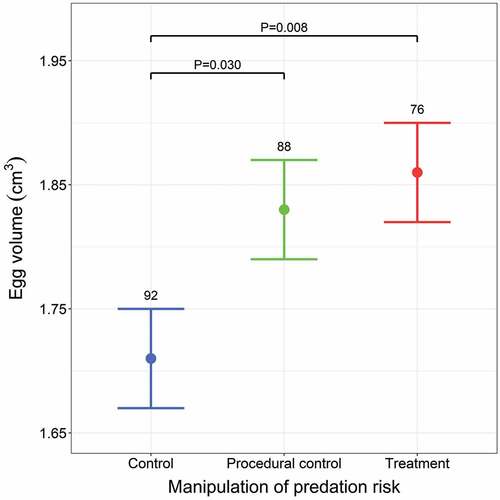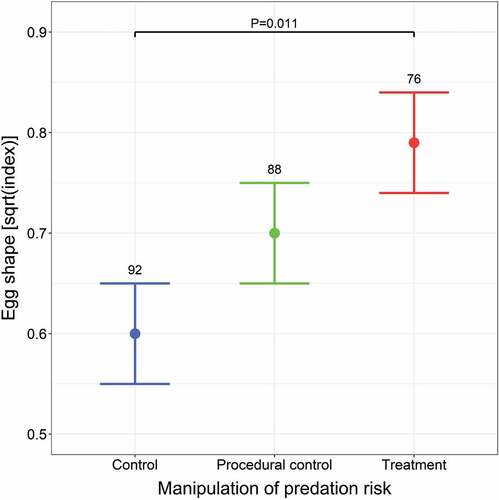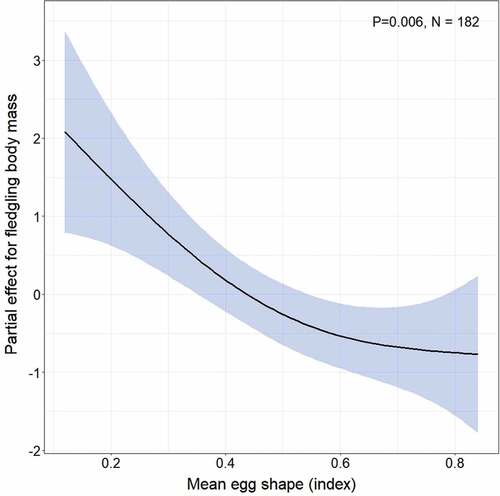Figures & data
Table I. Results of generalised additive mixed models fitted with Gaussian error variance and identity-link function that examined a set of explanatory variables on the volume and square-root transformed shape of eggs. Predation risk (categorical variable with levels: treatment, control, and procedural control) was set as a linear predictor, with covariates as regression splines. Longitude and latitude were set as an interaction of regression splines to control for spatial autocorrelation of the data. Nest identity was introduced to models as a random factor (fitted as a ridge penalty spline). Reduced models are presented after removing covariates that weakly contributed to the explained variation in dependent variables (if P ≥ 0.10). Parameter estimates accompanied by SE in brackets for the intercept and linear predictor, and effective degrees of freedom (edf) for splines are given. Significance level for each explanatory variable is coded as *** (P < 0.001), ** (P < 0.01), * (P < 0.05), ’ (P < 0.10).
Figure 1. The effect of predation risk manipulation on egg volume estimated by the GAMM presented in . Means with SE are shown. Sample sizes are given above bars. P-values for only significant differences between groups are presented.

Figure 2. The effect of predation risk manipulation on square-root transformed egg shape estimated by the GAMM presented in . Means with SE are shown. Sample sizes are given above bars. P-values for only significant differences between groups are presented.

Table II. Results of generalised additive mixed models fitted with Gaussian error variance and identity-link function that examined a set of explanatory variables on the body mass and tarsus length of fledged offspring. Predation risk (categorical variable with levels: treatment, control, and procedural control) was set as a linear predictor, with covariates as regression splines. Longitude and latitude were set as an interaction of regression splines to control for spatial autocorrelation of the data. Nest identity was introduced in the models as a random factor (fitted as a ridge penalty spline). Reduced models are presented after removing covariates that weakly contributed to explained variation in the dependent variables (if P ≥ 0.10). Parameter estimates accompanied by SE in brackets for the intercept and the linear predictor and effective degrees of freedom (edf) for splines are given. Significance level for each explanatory variable is coded as *** (P < 0.001), ** (P < 0.01), * (P < 0.05), ’ (P < 0.10).

